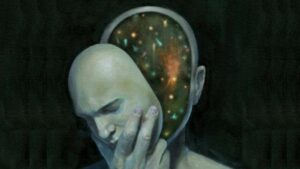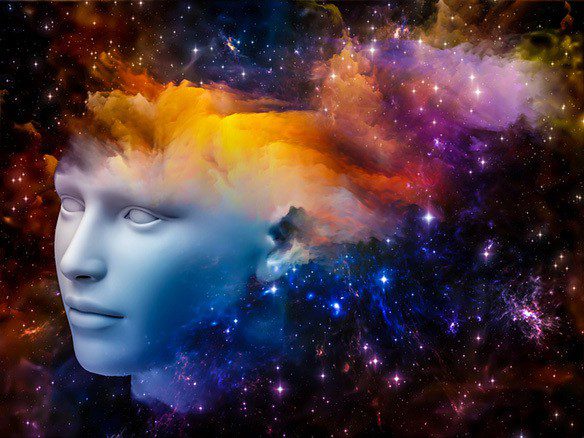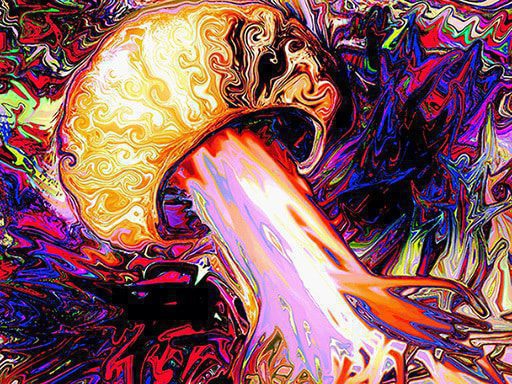
As a whole, humanity is rather familiar with the psychedelic experience due to our long history of religious, medicinal, and prophetic experimentation, but it wasn’t until recently that we’ve developed the capability of actually seeing what is physically happening in the brain when the consciousness is altered by one of these substances. What has been discovered may surprise you.
Psychedelic experiences and an increase in brain functionality have always gone hand in hand, but that may not be the case. The Proceedings of the National Academy of Sciences reported that during the time of altered consciousness while on psilocybin, certain faculties of the brain seem to ‘power down’. By using functional Magnetic Resonance Imaging (fMRI), decreases in activity were observed in the anterior and posterior cingulate cortices (ACC & PCC) as well as the medial prefrontal cortex (mPFC). Also, functional connectivity between the PCC and the mPFC, which is usually synchronized, seems to de-synchronize considerably in ratio with the intensity of the experience; the strongest experiences are associated with largest decreases of the brain faculties.
The reason that this reduced activity in the brain results in such profound and indescribable experiences is because much of the brain activity that is inhibited is information processing. For this processing to happen normally, various parts of the brain work in synchronicity to maintain the orderly flow of empirical information to the brain, information that is limited to our five senses. During a psychedelic experience, however, the synchronicity is lost and the information processing hubs of the brain begin to function independently, resulting in unique, abstract, inspiring, confusing, blissful, and occasionally terrifying perceptions of our reality.

“Psychedelics are thought of as ‘mind-expanding’ drugs, so it has commonly been assumed that they work by increasing brain activity. Surprisingly, we found that psilocybin actually caused activity to decrease in areas that have the densest connections with other areas.” – David Nutt, a neuropsychopharmacologist at Imperial College London
Long before the rise of modern brain science, english writer Aldous Huxley actually felt that the brain acts as a “reducing valve” that impedes full conscious awareness and that when this valve is opened by psychedelics, our perception runs rampant and we begin to truly experience existence. Huxley proposed this idea in 1954, the year that he wrote The Doors of Perception. This hunch was based entirely off of his own personal experience after taking the mescaline that he received from Dr. Humphry Osmond.
With this new understanding of how the brain is affected by these substances, the therapeutic value is really presenting itself. Many of the everyday problems that plague modern society such as depression, pessimism, pathological brooding, and emotional distress are the result of hyperactivity in the mPFC. A controlled psychedelic therapy treatment could allay all of these psyche issues as the mPFC temporarily powers down and is given a chance to rest.
Deactivation of the mPFC is not for everyone, however. Some individuals that suffer from a chronic under activity in the mPFC experience anxiety and over anticipation of both good and bad experiences. As with any other form of medicine, psychedelic treatment will suit the needs some more than others. Even with this in consideration, the astonishing potential for those that would benefit from psychedelic therapy makes these results a huge landmark in psychiatric treatment.
With further study and a more developed understanding of how the various psychoactive substances affect brain functionality, we may reunite with a long lost medical practice. Medical experimentation with psychedelics may open up an entirely untapped spectrum of potential medicines. The possibilities could revolutionize the way we approach an individual’s psychological issues.
Sources
Carhar-Harris, R., D. Erritzoe, T. Williams, J. Stone, L. Reed, A. Colasanti, R. Tyacke, R. Leech, A. Malizia, K. Murphy, P. Hobden, J. Evans, A. Feilding, R. Wise, and D. Nutt. “Neural Correlates of the Psychedelic State as Determined by FMRI Studies with Psilocybin.” PNSA.org. N.p., n.d. Web. 10 June 2015.Sporns, Olaf, Christopher J. Honey, and Rolf Kötter. “Identification and Classification of Hubs in Brain Networks.”PLOS ONE:. DOI: 10.1371/journal.pone.0001049, n.d. Web. 10 June 2015.
Vollenweider, Franz X., and Michael Kometer. “The Neurobiology of Psychedelic Drugs: Implications for the Treatment of Mood Disorders.” Nature.com. Nature Publishing Group, n.d. Web. 10 June 2015.
Costandi, Mo. “Psychedelic Chemical Subdues Brain Activity.” Nature.com. Nature Publishing Group, n.d. Web. 12 June 2015.
Halberstadt, Adam, and Mark Geyer. “Do Psychedelics Expand the Mind by Reducing Brain Activity?” Scientific American Global RSS. N.p., n.d. Web. 12 June 2015.

